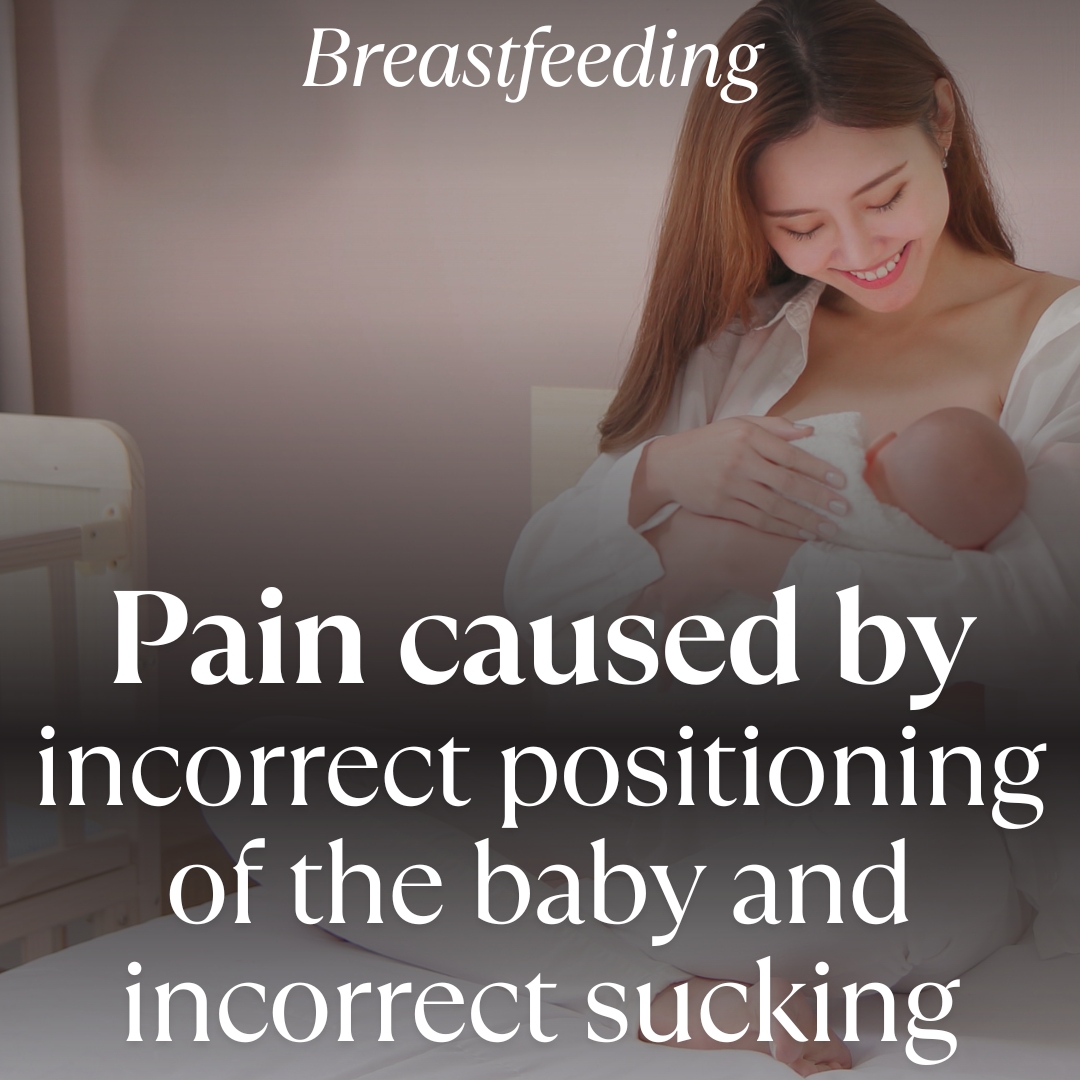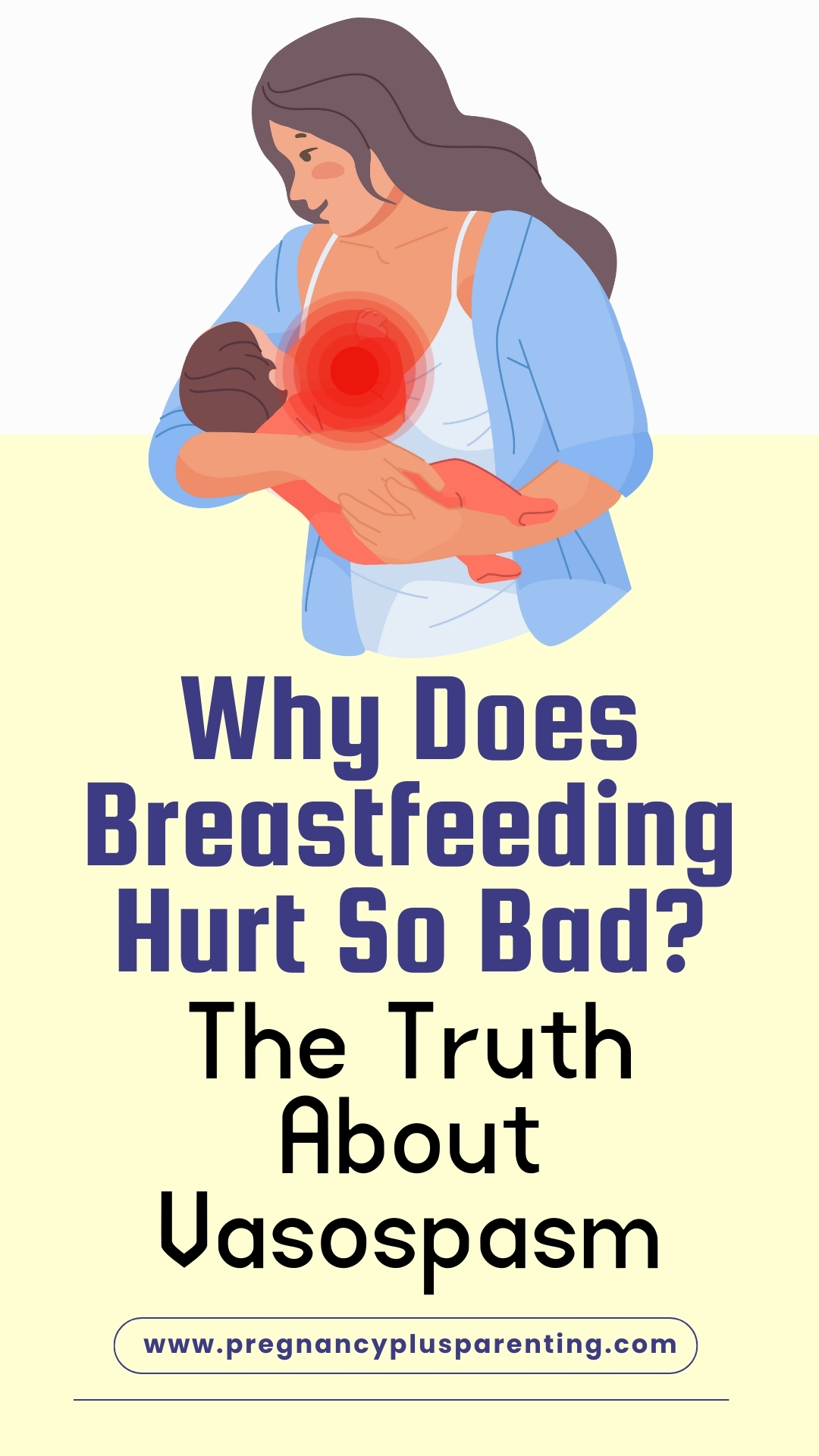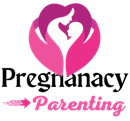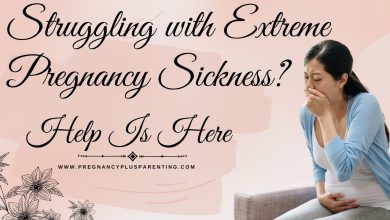Why Does Breastfeeding Hurt So Bad? The Truth About Vasospasm
Has it ever happened to you that a sudden pain runs through your nipple after breastfeeding, it turns bluish or white and is therefore suspected of vasospasm?
What exactly is vasospasm? When do the symptoms occur? What can trigger them? And what can be done to combat them?
Breastfeeding your baby properly takes practice, even though it’s the most natural thing in the world.
This often results in various pains and discomforts, and as many as one-third of breastfeeding women decide to stop breastfeeding early.
The start of breastfeeding is particularly characterized by challenges that require caution and patience and must be overcome, because the World Health Organization (WHO) recommends that infants be fed exclusively with breast milk for at least the first six months after birth.
If you’re a first-time mom and unsure about how breastfeeding will work, it can be comforting to know that you’re not alone in your worries and uncertainties.
In this article you will find information about vasospasm, but also about other discomforts and pains that can occur at the beginning of breastfeeding and later.
Nipple vasospasm – symptoms, causes and treatment
Typical symptoms of vasospasm or vascular spasm are pale or bluish nipples, depending on skin color, and burning, sharp, or stabbing pain that extends deep into the breast.
It is important to emphasize that vasospasms do not cause sore nipples .
Vasospasm during breastfeeding – Pain is particularly typical when the nipple is removed from the warm mouth of the infant and exposed to cool air after breastfeeding.
Vasospasms are unlikely to occur at the beginning of breastfeeding. They are more likely to occur after a few weeks or even months.

Breast vasospasm – This is actually narrowed blood vessels in the nipple, which can lead to
Reduced blood flow to the nipple. Affected mothers often also have cold hands and feet.
The risk group that is more prone to vasospasm includes women who suffer from rheumatoid arthritis or Raynaud’s syndrome.
In addition, vasospasms also occur as a side effect of beta-blockers taken during pregnancy, for example to treat high blood pressure.
Correct investment can already help
There are measures that can be taken against vasospasm without the immediate use of medication.
It is important that the child is positioned correctly during breastfeeding, because sometimes the problem can be solved by better positioning.
A superficial attachment, in which the baby does not also cover parts of the areola with its mouth, as well as sucking difficulties of the child, for example due to a shortened frenulum of the tongue or lip , can trigger vasospasms.
Incidentally, incorrect positioning over a long period of time can cause pain during breastfeeding, even if it does not necessarily lead to vasospasm.
Therefore, it is highly recommended to consult a lactation consultant or midwife.
Both the breastfeeding mother’s environment and her medication intake are also checked, because not only caffeine and passive smoking, but also certain medications and dietary supplements can constrict the blood vessels and thus trigger the symptoms.
Heat and nutritional supplements as therapy
The main therapy used is heat, meaning warm compresses are placed on the affected nipple.
Dietary supplements such as magnesium, calcium, omega fatty acids, vitamin B6, evening primrose oil or lecithin are also helpful.
Vasospasm: Breast Magnesium Dosage – Regarding the intake of magnesium (about 1000 milligrams daily) and calcium (about 2000 milligrams daily), these supplements should not be taken simultaneously, but separately, one in the morning and the other in the evening.
The complaint can also occur if the mother regularly took high doses of magnesium during pregnancy and abruptly stopped taking it after birth.
The strain usually subsides when the breastfeeding mother takes magnesium and calcium again.
Regarding vitamin B6 intake, some experts recommend limiting it to a maximum of 25 milligrams per day, while others advocate an intensive dosage of 100 milligrams twice a day for a week, or even longer if the therapy proves effective.
If the milk flow causes discomfort
Some breastfeeding mothers find that the milk flows very quickly, forcing the baby to clench its jaw to slow the flow.
This is usually the case when the mother has a lot of milk and this can be counteracted by using the appropriate breastfeeding position, such as leaning back so that the milk flows more slowly and the baby does not have to clench its jaw so hard.
On the other hand, if there is too little milk , the baby may create a very high vacuum when sucking in order to better access the slowly flowing milk.
With all these measures, the symptoms can be successfully treated and pain relief can be ensured in most cases.
This usually takes a few weeks. During this time, the breastfeeding mother can take painkillers such as paracetamol or ibuprofen.
The prescription drug nifedipine
For persistent pain, the drug nifedipine is prescribed, which dilates the blood vessels and is also approved for use in cases of Raynaud’s syndrome.
This medication also takes a few days to weeks to take full effect and for noticeable improvement to occur.
In Canada, for example, nifedipine is prescribed for vasospasm for two weeks and the treatment is extended until symptoms improve.
Because this medication is also well tolerated by babies, it is recommended by the Charité Hospital in Berlin.
However, women with low blood pressure should be careful and their blood pressure should be measured regularly while taking this medication.
Affected women should also only take dietary supplements after consulting their doctor.
Vasospasm and other pain – thrush or fungal infection
This infection can affect both the nipples and the milk ducts and usually does not occur immediately after birth, but rather after a relatively problem-free period of breastfeeding.
The nipples are quite inconspicuous in cases of thrush, but the pain that occurs at the beginning of breastfeeding and lasts until its end is usually very severe.
Since vasospasm restricts blood flow to the nipples, this condition promotes the development of thrush, which is why these symptoms often occur simultaneously and cause severe pain.
Vasospasm and other pain – If the symptoms occur at the beginning of breastfeeding
There are typical pains that occur at the beginning of breastfeeding and can either stop on their own or be overcome with competent support.
Pain due to the body’s atrophy
In the first few days after giving birth, women often suffer from abdominal pain due to uterine contractions, which are completely normal as the body recovers .
After the early postpartum period, i.e. a few days after birth, the uterus should have shrunk back and the pain should subside.
Breastfeeding prevents excessive blood loss and other complications. After a few weeks, the pain usually disappears completely.
Suction pain
In the first few days of breastfeeding, it is not necessarily because the attachment technique is wrong, because the nipples are particularly sensitive due to the hormonal changes after birth and also have to get used to the baby’s sucking.
Pain is therefore typical at the beginning and usually goes away on its own, while the skin remains uninjured.
The pain is usually most unpleasant immediately after the baby is breastfed, but subsides once the milk ejection reflex is triggered, which happens after about ten seconds.
For this reason, this pain is also called suction pain. This can be avoided or alleviated with breast massage, so that the milk ejection reflex is triggered before breastfeeding, and milk flows as soon as the baby is breastfed.
Pain caused by incorrect positioning of the baby and incorrect sucking
If the mother feels pain while breastfeeding but it stops after the baby lets go of the breast, then it is a sign that the baby is either not latching on properly or is not sucking properly.
To avoid sore nipples, the baby’s attachment technique and sucking behavior should be checked.
Correct breastfeeding needs to be learned, especially when you become a mother for the first time, but the infant also needs to find the right way to breastfeed .

The baby’s mouth needs to encompass not only the nipple, but also a large portion of the areola. The baby should therefore open its mouth wide, because if it doesn’t, it won’t be able to grasp the breast properly.
When the baby is latched onto the breast, it presses the nipple incorrectly between the tongue and palate, which not only causes sore nipples but can also lead to injury and infection.
If the baby is not latched on correctly, the mother can intervene by placing her little finger between the baby’s jaw and gently removing it from the breast, thus releasing the vacuum created by sucking.
The baby is then fed back into the breast and it is likely that this process will need to be repeated several times until the baby is properly positioned.
If the pain during breastfeeding is not relieved by correct attachment, the breast milk can be pumped and the child fed with breastfeeding-friendly products.
Painful milk ejection reflex
During the milk ejection reflex, fine muscle contractions drive the breast milk to the nipple, which many women can feel, but usually only the first time and not again later.
Breastfeeding mothers describe the feeling as slight pressure in the breast, as a warm tingling and pulling sensation that is rather pleasant or neutral.
Some women also find the let-down reflex unpleasant or somewhat painful. It is usually felt most clearly on the other breast, the one not currently being breastfed.
Usually, this pain and discomfort subsides on its own after a few weeks.
However, a painful milk ejection reflex can also be a symptom of other problems, such as mastitis or milk congestion.
It is definitely a good idea to seek breastfeeding advice so that the causes of the problems can be identified early on.
Vasospasm and other long-lasting and recurring pain as a special challenge
A study found that 20% of breastfeeding mothers surveyed suffered from pain about two months after giving birth.
Diagnosing and treating late-onset, long-lasting, and recurring pain, including vasospasm, is one of the greatest challenges in breastfeeding counseling.
In this regard, work is often carried out in an interdisciplinary manner, with breastfeeding consultants, midwives and doctors from different disciplines working together, such as general practitioners, paediatricians, gynecologists and dermatologists, but also psychotherapists and osteopaths are consulted.
Lactation consultants and midwives who have the additional qualification IBCLC can help most effectively because they can carry out more detailed physical examinations and, in addition to diagnosis, can also give advice on the necessary treatment measures and medications.
In addition to vasospasm, there are several possible causes of persistent and recurring pain.
If the breast pump causes injuries
A study conducted showed that 15% of breastfeeding women surveyed reported nipple injuries while pumping. The breast pump’s funnel must fit and be used correctly.
The vacuum should be adjusted so that pumping isn’t painful. Furthermore, you shouldn’t continue pumping once the milk flow has significantly decreased.
If you want to stimulate milk production, you may be able to pump for a maximum of five minutes, but no longer.
Anatomical features in the baby’s mouth area
Whether an infant is able to latch onto the breast and suckle properly depends on many factors: Is the baby premature and not yet fully developed? What is the status of their jaw and mouth anatomy and muscle tone?
Does the baby have any neurological or respiratory problems? Are there any congenital abnormalities?
In such cases, the support of breastfeeding specialists is essential and the milk must be pumped or emptied by hand in order to stimulate and maintain milk production and still ensure that the child receives breast milk.
A frenulum that is too short is also one of these anatomical peculiarities that result in the baby not being able to move the tongue properly and therefore not being able to suckle correctly and drink effectively from the breast.
This can cause pain while breastfeeding.
Anatomical features of the nipples
If the mother’s nipples have a special shape, this can also lead to the baby not being able to suckle effectively.
Sometimes the nipple is too large or too small for the baby’s mouth. In such cases, different breastfeeding positions can help.
If this does not work even with the support of a midwife or lactation consultant, nipple shields are used or a breast feeding set ensures that the milk can flow without pain and without strain on the nipples.
Nipple confusion: Between breast and bottle
If the baby is bottle -fed in addition to breastfeeding , this can lead to nipple confusion because sucking on a bottle is very different from sucking on the breast and is easier.
In addition, unlike with the breast, with a bottle it is not necessary for the baby to open its mouth wide in order to suckle effectively.
In principle, it is possible to get the baby used to the breast again after drinking from the bottle.
The baby bites while breastfeeding
If your baby bites or clenches his jaw against your chest, there could be several reasons behind it: Does the child have torticollis or a broken collarbone?
Has it suffered birth trauma affecting the face, skull, and neck?
Does your baby have an asymmetrical jaw, a stuffy nose, or a tonic bite reflex? Or is this perhaps a reaction to an overly strong milk ejection reflex? Could it be that teething has started?
Too much milk, milk congestion, milk blisters and mastitis
If the breastfeeding mother has too much milk, this can not only lead to unpleasant tension and even pain, but also increase the risk of milk congestion and breast infections.
If there is too much milk, the milk ejection reflex is often painful.
In addition, the baby will then instinctively squeeze the nipple with its jaw or tongue to influence and slow down the flow of milk, which is very painful.
On the other hand, a milk blockage is also very painful and causes the breast to harden and the milk to not drain properly.
A milk blockage can also be accompanied by so-called milk blisters .
These are yellowish or white blisters on the nipple covered with a thin layer of skin, which first appear immediately after breastfeeding but over time become permanently visible and cause stabbing pain.
A milk blister should only be punctured by a specialist using a sterile needle, as otherwise germs can penetrate the nipple and cause breast inflammation or mastitis, which is also very painful.
If further complications occur, an abscess may develop.
When skin germs are out of balance
The so-called dysbiosis or subclinical mastitis is considered by some experts to be a breast infection, but by others it is viewed in isolation.
This disease occurs when the germs that normally occur on the skin become unbalanced.
Unlike mastitis, dysbiosis affects only the milk ducts and not the surrounding tissue. Therefore, dysbiosis is also referred to as duct inflammation.
In the case of dysbiosis, certain bacteria, which are also part of the skin flora, multiply excessively and cause the milk ducts to narrow, which in turn causes inflammation.
Dybiosis is accompanied by bilateral deep, dull and burning breast pain that is noticeable both during and after breastfeeding.
The milk ejection reflex is also painful and pressure pain occurs, especially on the underside of the breast.
The insidious aspect of this condition is that the breasts otherwise show no abnormalities. However, it often leads to further discomfort, such as swelling, engorgement, and cracked nipples.
In order to restore the bacterial balance, it is necessary to take probiotics and antibiotics as well as to change the diet.
In such cases, the consumption of fermented and unpasteurized foods, such as sour-milk products and pickled, sour vegetables, is recommended.
Vasospasm and other pain – viral infection of the nipple
In cases of infections such as herpes zoster or herpes simplex, which can also affect the breasts, it is not recommended to breastfeed in the affected area.
The baby could also become infected, but the child can also transmit the infection to the mother.
However, this isn’t a reason to stop breastfeeding. The milk can be collected by hand pumping, but then discarded until the breasts have healed.
Vasospasm and other pain – Psoriasis and rashes
Psoriasis, or psoriasis, usually develops no earlier than four to six weeks after birth due to a suboptimal application technique. This skin disease is characterized by scaling and inflamed skin.
Treatment for this condition is quite limited during breastfeeding to avoid endangering the infant. Treatment with UVB radiation is most effective in these cases.
Otherwise, active ingredients such as dithranol and steroids should only be applied after breastfeeding and breasts should be thoroughly cleaned before each breastfeeding session.
Rashes on the chest can include atopic eczema, dermatitis, and allergies.
It often happens when the breastfeeding mother is hypersensitive to certain clothing or the friction of clothing on the skin, when she does not tolerate the nursing pads or the supplementary food of the slightly older child with which she comes into contact through breastfeeding, or when she is allergic to certain nipple ointments.
Vasospasm and other pain – Tight chest muscles
IBCLC lactation consultant Edith Kerneman recently discovered that tension in the chest and shoulders can also cause the chest muscles to tighten.
The tension causes vascular spasms, which reduces blood flow to the breast and nipple and leads to pain.
Not only incorrect attachment and unfavorable breastfeeding positions can be the causes of such tension, but also the fear that breastfeeding might be painful.
There are also other causes, such as musculoskeletal or orthopedic, for the occurrence of tension, which can occur not only during breastfeeding.
Again, proper and effective breastfeeding is a therapeutic measure. Relaxation exercises and massages also help loosen the breasts and muscles.
Vasospasm and other pain – A new pregnancy as a cause of symptoms
If you become pregnant again while breastfeeding, your nipples may become sensitive and painful.
This does not necessarily happen at the beginning of the new pregnancy, but may not become noticeable until weeks or months later.
Since it is not uncommon for the affected woman to not yet be aware of the new pregnancy, thrush or vasospasm can also be considered as possible causes of the symptoms.
In contrast to these cases, however, there is one important difference: the nipple no longer hurts after the baby has let go of it.
It is also quite common for breastfeeding mothers who become pregnant again to suddenly feel aversion to breastfeeding.
Vasospasm and other pain – allodynia
Allodynia is a painful reaction to stimuli such as mere touch.
For women affected, the friction from bras, clothing or nursing pads causes severe pain and drying the nipples can also become unbearable.
Pain caused by allodynia may occur in isolation or in association with other chest disorders.
Vasospasm and other pain – medications and painkillers during breastfeeding
Certain painkillers, such as paracetamol and ibuprofen, are safe to use during breastfeeding because no side effects have been observed in infants.
However, mothers should avoid taking products containing acetylsalicylic acid, such as Aces or Aspirin, as they would otherwise have to take a break from breastfeeding.
In cases of discomfort and pain, it is often only possible to continue breastfeeding thanks to ibuprofen or paracetamol.
Incidentally, these medications are also prescribed to babies when they have a fever or pain.
If the mother does not take more than 1600 milligrams of ibuprofen per day, this amount is not even detectable in breast milk.
Breastfeeding can also be continued when taking certain antibiotics that are absolutely necessary to treat an illness.
It shouldn’t confuse you that the package inserts for these medications state that they shouldn’t be taken while breastfeeding. This is how the manufacturers protect themselves from lawsuits.
Final thoughts
Breastfeeding may be the most natural thing in the world, but it has to be learned by both mother and baby, and it rarely goes smoothly from the start.
There are good reasons why there are breastfeeding specialists such as lactation and breastfeeding consultants, because numerous complaints, illnesses and pain can occur during breastfeeding.
In this article, I have discussed the causes, symptoms and treatment options for vasospasm as well as other complications that can occur both at the beginning of breastfeeding and weeks or months later.
Milk stasis, mastitis, abnormalities in the baby’s mouth and the mother’s nipples, viral infections, thrush and rashes are some of them.
It may be surprising at first glance that many problems can be treated and alleviated by correctly positioning the baby.
First-time mothers in particular need advice and support in this regard.
Even if pain makes breastfeeding very unpleasant, it is advisable to persevere and continue breastfeeding by taking paracetamol or ibuprofen until the treatment is successfully completed.
It is important, of course, that if you suspect an illness, you contact a specialist, preferably an IBCLC consultant, so that the correct diagnosis can be made and the right treatment measures can be initiated.
And don’t forget, there are many women who struggle with breastfeeding complications, so you are not alone!







